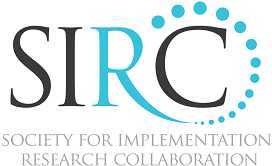Final Symposium – May 17, 2013
1. Interagency Collaborative Teams for Capacity Building to Scale-Up Evidence-Based Practice
Presentation Slides Not Available
Presenter: Gregory A. Aarons, PhD
Authors: Michael Hurlburt, PhD,1,2 Gregory A. Aarons, PhD,1,3 Danielle Fettes,1,3 Cathleen Willging,4 Lawrence A. Palinkas, PhD,1,2 & Mark J. Chaffin5
1Child & Adolescent Services Research Center; 2University of Southern California; 3University of California, San Diego; 4Pacific Institute for Research & Evaluation; 5University of Oklahoma Health Science Center
Abstract: Background: System-wide scale up of evidence-based practice (EBP) in child welfare is a complex process that requires consideration of multiple system and organizational levels. Yet few strategic approaches to address such concerns exist to support EBP implementation and sustainment across a service system. Building on the Exploration, Preparation, Implementation, and Sustainment (EPIS) implementation framework, we developed and are testing the Interagency Collaborative Team (ICT) process model to implement an evidence-based home visitation model within a large children’s service system. The ICT model emphasizes the role of local agency collaborations in creating structured supports for successful implementation. Methods: In this paper, we describe utilization of the ICT model to scale-up an EBP and present preliminary qualitative results from use of the implementation model. Qualitative interviews were conducted to assess challenges in building system, organization, and home visitor capacity to implement the EBP. Data collection and analysis centered on EBP implementation issues, as well as the experiences of home visitors under the ICT model. Results: Six notable issues relating to implementation process emerged from participant interviews, including: (a) initial commitment and collaboration among stakeholders, (b) leadership, (c) communication, (d) practice fit with local context, (e) ongoing negotiation and problem solving, and (f) early successes. These issues highlight strengths and areas for development in the ICT model. Conclusions: Use of the ICT model led to sustained and widespread use of SafeCare in San Diego County. Although some aspects of the implementation model may benefit from enhancement, rich qualitative data from implementation of SafeCare in San Diego suggest that the process model generates strong structural supports for implementation and creates conditions in which tensions between EBP structure and local contextual needs can be resolved in ways that support the expansion and maintenance of an EBP while preserving potential for public health benefit.
2. Collaboration, Negotiation, & Coalescence for Interagency-Collaborative Teams to Scale-up Evidence-Based Practice
Presentation Slides Not Available
Presenter: Gregory A. Aarons, PhD
Authors: Gregory A. Aarons, PhD,1,2 Michael Hurlburt, PhD,2,3 Danielle Fettes,1,2 Cathleen Willging,4 Lara Gunderson, MA,4 Mark Chaffin,5 & Lawrence A. Palinkas, PhD2,3
1University of California, San Diego; 2Child & Adolescent Services Research Center; 3University of Southern California; 4Pacific Institute for Research & Evaluation; 5University of Oklahoma Health Science Center
Abstract: Implementation and scale-up of evidence-based practices (EBPs) involves multiple stakeholders and a process that requires collaboration, negotiation, compromise and a shared vision of improving care. The present study examined the complex process involved in EBP scale-up across an entire service system using the Interagency Collaborative Team (ICT) approach and utilizing the EPIS implementation framework. Methods: Participants were key stakeholders in a large-scale county-wide implementation of an EBP to reduce child neglect, SafeCare®. Semi-structured interviews and/or focus groups were conducted with 27 individuals representing various constituents in the service system. A grounded theory approach to qualitative data collection and analysis was utilized. Results: Several challenges affected the eventual coalescence of community stakeholders in their implementation of SafeCare including, differing organizational cultures, varied organizational strategic approaches, differing definitions of collaboration, variations and competing priorities across leadership and leaders, resolution of power struggles, role ambiguity, and communication effectiveness. While the process resulted in eventual stakeholder coalescence and collaboration, each of the factors identified above impacted how stakeholders approached the EBP implementation process. Conclusions: System wide scale-up of EBPs involves multiple stakeholders in a complex process that provides a nexus for differing agendas, priorities, leadership styles, and negotiation strategies. The term “collaboration??? oversimplifies the multifaceted nature of the scale-up process. Implementation efforts should openly acknowledge and consider the complex agendas, priorities, and interaction styles of organizations and individual stakeholders during the Exploration, Preparation, and Implementation phases across outer (system) and inner (organizational) contexts. This will allow for facilitative resolution of the concerns of each participant in the process.
3. Leadership & Practice in the Face of Policy: How Supervisors & Providers Exercise Discretion in Evidence-Based Practice Implementation
Presentation Slides Not Available
Presenter: Lara Gunderson, MA
Authors: Lara Gunderson, MA, & Cathleen Willging, PhD, Pacific Institute for Research & Evaluation, University of New Mexico
Abstract: As more community-based organizations (CBOs) contract with government to deliver public services, we analyze how a unique partnership forged among a child welfare agency, a private foundation, and CBOs facilitated use of a Collaborative Training and Supervision Model (CTSM) to roll-out an evidence-based practice (EBP) to decrease child neglect throughout a large county in California. Partners were connected via complex, frequently evolving contracts, the contents of which were filtered through the lenses of diverse stakeholders, ranging from upper-level county administrators to those at the frontlines of service delivery. Methods: Qualitative data collected via focus groups and semi-structured interviews were collected and grounded theory analysis methods were utilized. Results: Analyses provided insight into how different stakeholders experienced and understood the implementation process, allowing for mid-course corrections and informing replication of both the CTSM and EBP within other service systems. Drawing on Michael Lipsky’s theoretical approach to street-level bureaucracy, we describe how two sets of stakeholders directly involved in EBP provision—home visitors and their supervisors—negotiated the constraints of a seemingly rigid contract to implement the EBP. We illustrated how both parties also exert discretion in their respective efforts to (a) realize their ethical obligation to serve clients, (b) adhere to CBO policies, and (c) function under limited financing. Discussion: The sometimes conflicting roles of supervisor and supervisee are complex and impacted by factors in both the outer system context and inner organizational context. Such complexity, if not resolved, may compromise fidelity to CTSM and EBP implementation requirements.
